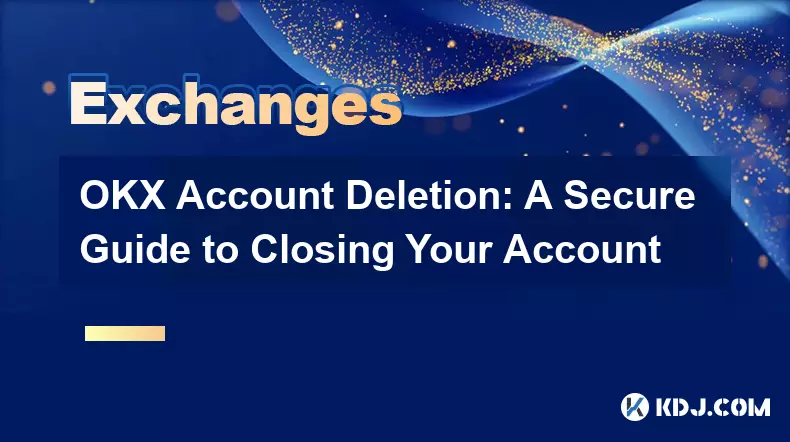-
 bitcoin
bitcoin $106680.127705 USD
0.67% -
 ethereum
ethereum $3615.722480 USD
-0.65% -
 tether
tether $0.999925 USD
-0.04% -
 xrp
xrp $2.550072 USD
5.91% -
 bnb
bnb $1002.572269 USD
-0.90% -
 solana
solana $168.746669 USD
1.08% -
 usd-coin
usd-coin $0.999832 USD
-0.03% -
 tron
tron $0.297244 USD
1.97% -
 dogecoin
dogecoin $0.182965 USD
0.71% -
 cardano
cardano $0.600432 USD
2.56% -
 hyperliquid
hyperliquid $41.439691 USD
-1.57% -
 chainlink
chainlink $16.548399 USD
2.40% -
 bitcoin-cash
bitcoin-cash $524.993680 USD
3.45% -
 stellar
stellar $0.302259 USD
4.10% -
 zcash
zcash $539.994871 USD
-16.31%
OKX Anti-Phishing Code: The Complete Guide to Avoiding Scams
Enable OKX’s anti-phishing code to verify authentic emails and spot fake ones—always check for your unique code before trusting any message. (154 characters)
Nov 04, 2025 at 12:00 pm

Understanding the Role of OKX Anti-Phishing Codes
1. The OKX anti-phishing code is a personalized security feature designed to help users verify the authenticity of emails sent from the official OKX platform. When enabled, every legitimate email from OKX will include this unique code, allowing users to distinguish genuine messages from fraudulent ones.
- Cybercriminals frequently use fake emails that mimic official communications to steal login credentials or seed phrases. These phishing attempts often appear identical to real notifications, making it difficult for even cautious users to detect them.
- By setting a custom anti-phishing code through the OKX account settings, users add an extra layer of trust verification. If an email lacks the correct code or contains a mismatched one, it should be treated as suspicious.
- This feature does not prevent malware or compromised devices but specifically targets social engineering attacks via email. It empowers users with a simple yet effective tool to validate communication integrity.
- Activation requires only a few steps within the security settings of the OKX app or website, and once set, applies automatically to all outbound official messages.
How to Set Up Your Anti-Phishing Code on OKX
1. Log in to your OKX account using the official website or mobile application. Ensure you are on the correct domain to avoid entering sensitive information on a spoofed site.
- Navigate to the 'Account Security' section under the user profile menu. Look for the option labeled “Anti-Phishing Code” and click on it.
- You will be prompted to create a unique code between 4 and 20 characters long. This can include letters and numbers but should not contain special symbols.
- After entering your desired code, confirm it with your two-factor authentication method—either Google Authenticator, SMS, or email verification depending on your setup.
- Once confirmed, the system will begin embedding your anti-phishing code in all future emails from OKX. Any message without this exact string should raise immediate suspicion.
Recognizing Phishing Attempts Despite Security Measures
1. Fraudsters may still send convincing emails that replicate OKX branding, logos, and formatting. They often create urgency by claiming account suspension or unauthorized access.
- A common tactic involves directing users to counterfeit login pages where credentials are harvested. These domains might resemble okx.com but include subtle misspellings like “okx-login.com” or “o-k-x.net”.
- Even with an anti-phishing code active, users must manually check each email for the presence and accuracy of the code. Automated systems cannot flag these mismatches; user vigilance remains essential.
- Some phishing campaigns bypass email entirely, using fake customer support chats, social media messages, or pop-up ads that mimic OKX interfaces.
- Never click links in unsolicited messages. Instead, go directly to the official OKX site by typing the URL yourself or using a saved bookmark.
Best Practices for Maximizing Account Protection
1. Combine the anti-phishing code with other security tools such as two-factor authentication (2FA), preferably using an authenticator app rather than SMS due to SIM-swapping risks.
- Regularly review connected devices and API keys in your OKX security dashboard. Revoke access for any unfamiliar or outdated connections.
- Treat every communication requesting personal data or wallet interaction as potentially malicious until independently verified. Legitimate platforms rarely ask for passwords or recovery phrases.
- Educate yourself on current scam tactics by reviewing OKX’s official blog and security advisories. Awareness reduces susceptibility to evolving threats.
- Store your anti-phishing code separately from your password and 2FA methods. Do not save it in the same digital vault or note-taking app used for other credentials.
Frequently Asked Questions
What happens if I forget my anti-phishing code?You can reset your anti-phishing code at any time through the security settings of your OKX account. The reset process requires identity verification via your chosen 2FA method to ensure only the rightful owner makes changes.Can the anti-phishing code protect against fake apps?The anti-phishing code only validates email authenticity and does not detect counterfeit applications. Always download the OKX app from official app stores or the true OKX website to avoid fake versions.Is the anti-phishing code visible to others?No, your anti-phishing code is private and known only to you and the OKX system. It appears in outgoing emails so you can verify them, but it is never shared publicly or used in transactions.Do other exchanges offer similar features?Yes, several major cryptocurrency exchanges provide anti-phishing codes or comparable verification mechanisms. Each platform implements its own version, so users should configure these protections individually across all their accounts.
Disclaimer:info@kdj.com
The information provided is not trading advice. kdj.com does not assume any responsibility for any investments made based on the information provided in this article. Cryptocurrencies are highly volatile and it is highly recommended that you invest with caution after thorough research!
If you believe that the content used on this website infringes your copyright, please contact us immediately (info@kdj.com) and we will delete it promptly.
- CFTC, Crypto, and Congress: Navigating the Murky Waters of Market Oversight
- 2025-11-11 10:55:01
- XRP: Is This Crypto's Best-Performing Asset?
- 2025-11-11 06:45:01
- Navigating the Crypto Maze: Economic Schedules, Treasury Auctions, and the Bitcoin Beacon
- 2025-11-11 07:40:01
- Exodus & Grateful: Stablecoin Payments Take Center Stage
- 2025-11-11 10:10:01
- AVAX & OP: Price Prediction, Open Interest, and Recovery Gains - What's Next?
- 2025-11-11 06:50:02
- HUGS Presale: Milk Mocha's Crypto Rush is On!
- 2025-11-11 10:10:01
Related knowledge

Common Mistakes to Avoid on OKX: A Guide for New Traders
Nov 04,2025 at 03:37pm
Understanding the Interface Before Trading1. New traders often jump into placing orders without fully exploring the OKX platform layout. Taking time t...

OKX TradingView Integration: A Guide to Advanced Chart Analysis
Nov 02,2025 at 03:37am
OKX and TradingView: Bridging the Gap for Professional Traders1. OKX, one of the leading cryptocurrency exchanges, has integrated with TradingView to ...

Finding Your OKX Deposit Address: A Quick and Safe Guide
Nov 05,2025 at 01:15pm
Finding Your OKX Deposit Address: A Step-by-Step Process1. Log into your OKX account using your registered credentials. Ensure you are accessing the o...

OKX Savings Guide: A Low-Risk Strategy for Earning Crypto
Nov 05,2025 at 06:55am
Understanding OKX Savings and Its Role in Crypto Earnings1. OKX Savings offers users a straightforward method to earn passive income by leveraging idl...

OKX Account Deletion: A Secure Guide to Closing Your Account
Nov 05,2025 at 08:44am
Understanding the Implications of Account Closure1. Closing your OKX account permanently removes access to all associated trading features, including ...

Mastering the OKX Mobile App: Tips for Trading on the Go
Nov 05,2025 at 01:19am
Streamlined Navigation for Efficient Trading1. The OKX mobile app features a clean and intuitive interface that allows traders to access key functions...

Common Mistakes to Avoid on OKX: A Guide for New Traders
Nov 04,2025 at 03:37pm
Understanding the Interface Before Trading1. New traders often jump into placing orders without fully exploring the OKX platform layout. Taking time t...

OKX TradingView Integration: A Guide to Advanced Chart Analysis
Nov 02,2025 at 03:37am
OKX and TradingView: Bridging the Gap for Professional Traders1. OKX, one of the leading cryptocurrency exchanges, has integrated with TradingView to ...

Finding Your OKX Deposit Address: A Quick and Safe Guide
Nov 05,2025 at 01:15pm
Finding Your OKX Deposit Address: A Step-by-Step Process1. Log into your OKX account using your registered credentials. Ensure you are accessing the o...

OKX Savings Guide: A Low-Risk Strategy for Earning Crypto
Nov 05,2025 at 06:55am
Understanding OKX Savings and Its Role in Crypto Earnings1. OKX Savings offers users a straightforward method to earn passive income by leveraging idl...

OKX Account Deletion: A Secure Guide to Closing Your Account
Nov 05,2025 at 08:44am
Understanding the Implications of Account Closure1. Closing your OKX account permanently removes access to all associated trading features, including ...

Mastering the OKX Mobile App: Tips for Trading on the Go
Nov 05,2025 at 01:19am
Streamlined Navigation for Efficient Trading1. The OKX mobile app features a clean and intuitive interface that allows traders to access key functions...
See all articles










































































